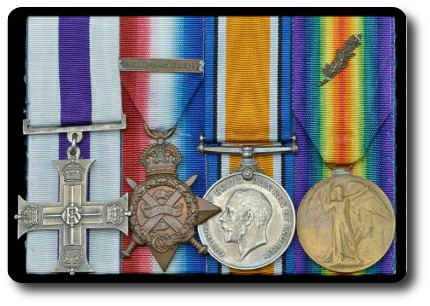Canada's Militia Masquerade (1938)
Topic: Canadian Militia
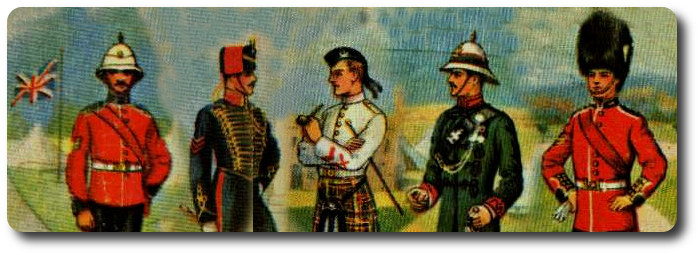
Canada's Militia Masquerade (1938)
Now Unpopular, Obsolete, it Needs Overhauling for National Service
The militia is ill-equipped. Service uniforms are old, badly fitted. Web equipment is broken. The men have no boots. Generally a lack of imagination has been shown.
The Financial Post, 3 December 1938 By Lt.-Col. Louis Keene
Lieut.-Col. Louis Keene, who rose from the ranks during the war and has served actively in the militia, in the accompanying article, urges the complete reorganization of Canada's defence forces which he brands as not just antiquated but unpopular. On the foundation of Canadian defence he would build a national service corps.
A few Sundays ago Toronto saw four parades all in the trappings of tradition. The Ancient Order of Foresters were there in their picturesque regalia, The Queen's Own in their last century rifle green uniforms, the Grenadiers in their guard's uniforms, the Toronto Scottish in their hodden grey kilts.
People on the street, if they thought at all, probably felt quite secure in the knowledge that the brave men of Canada's militia would meet the foe without flinching.
Equipped for action (as these men will be in ill-fitting uniforms, obsolete equipment and weapons, this whole force, despite their bravery, could be destroyed by one sections of two cars of trained, well-armored fighting vehicles.
Why perpetuate the obsolescent Canadian militia?
Antiquated, Unpopular
If my judgment is correct, it has little or no public support. It is antiquated, ill-equipped, unpopular. It has hew if any links with any other part of Canadian life.
A few weeks ago competent authorities stated that we are unable to protect ourselves on land, sea, or in the air. Some steps are now being taken to remedy this situation.
Following staff reorganization dating back to 1936, efforts have been made to remove some of the glaring weaknesses of our antiquated system. As yet the rank and file have felt little of its impact. And nothing has been done to fit the militia for the larger responsibilities of national and community life.
Yet canada spends from $15 to $20 millions annually on its militia. It boasts many fine traditions, much able, conscientious personnel.
Is it not time we looked closely at some of the criticisms which have been levelled at it; time we took a national stocktaking to see what might be done to link this branch of public service with the larger responsibilities of individual and national well being?
In other countries, soldiers are used to aid the community. A few years ago in Sweden there was a big forest fire and 10,000 Swedish troops were turned out to aid in putting out the flames.
Even the German army is used for helpful community work. This summer they were turned out to help the farmers fight a plague of caterpillars.
National Guards in the United States are called out to restore order and help in times of disaster. In France, service in a fire brigade is counted as service—army service.
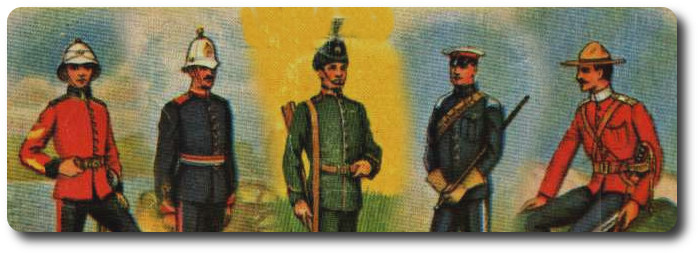
Overall Army
Britain now has her "Overall" Army and her Women's Air Guard. She is paving the way for volunteer service which can be used for achievement in peace as well as strength in war. Why should Canada not have her own National Service Corps?
It could be of great peace-time service.
In northern communities it could be trained in fore protection to help preserve our timber wealth. Other communities have equally important public service jobs to be done. Jobs that would appeal to men and women with a sense of good citizenship. Equally important is the job such as National Service Corps could do to train the individual; to build up his physique, his morale, his technical skill. Yet today the Canadian militia is ignored, treated with indifference.
Why is this so?
For one thing our militia is antiquated.
It is an out-of-date carryover from the period of the Crimean War. It was formed at the time when England was so short of men that she had to withdraw all her troops from Canada. At that time our young country was told that it would have to look after its own defence. Immediately and enthusiastically the militia was formed. It was new and up to date, smart, popular and efficient.
As the peaceful years rolled by the threat of foreign foes ceased to worry us. The militia settled down to being a responsible part of Canadian life. No one of importance missed being in some way connected with their local militia unit. There was some remarkably fine shooting done years ago by the old militia. Even rural regiments had their fine shots who went to Bisley.
Pushed Aside in 1914
The great opportunity which came in practically every other military force in the world was, of course, the Great War. But in Canada the political situation, plus jealousy and muddling pushed the miltia to one side. A new setup was arranged.
Thousands of Canadians who fought in the war had nothing to do with the organized militia in any form either before, during or after the war. Great opportunities to build a desirable tradition were lost. When the war was over, few of the returning soldiers were interested in the militia.
The militia never got another chance to get back its rightful position in the community. After the war was over, General Sir Arthur Currie, at a famous reunion dinner, asked returned officers to look after the militia. This meant nothing to many of them. They didn't bother.
At the time of the Coronation, instead of a smart, single unit being sent over to represent the whole of Canada, a miscellaneous, conglomerate group was formed. It was one of the few units which was not youthful and dressed up for this gala occasion. Without the Royal Canadian Mounted Police the Canadian contingent would have made a very poor showing at the Coronation.
The crowning blow of all was at the time of the international crisis when war seemed neat—a matter of hours—and patriotic citizens rushed to military district headquarters and offered to raise battalions. The Canadian Corps offered to furnish a division of troops. The militia was not even considered, was again given a back seat.
The militia is ill-equipped. Service uniforms are old, badly fitted. Web equipment is broken. The men have no boots. Generally a lack of imagination has been shown.
Men do not like getting out of their own civilian clothes and putting on old uniforms.
Recently at Camp Borden we saw rifles tied with handkerchiefs to indicate anti-tank guns. Even the new anti-aircraft guns were on mounts dated 1918. At the last camp at Niagara-on-the-Lake, the airplane operating with us was 16 years old. The small arms ammunition we used at the rifle ranges was dated 1917.
The militia is ignored by most people. It has not the support of the employers of labor. Businessmen do not take it seriously.
Employers must be shown that the discipline and training which men can learn in camp should be of value to them in their business. Today they feel that by letting men go to camp they are doing them a great favor.
As now constituted, the militia has not the support of the workers. It has very little appeal to the imagination of youth who have many other spare-time attractions unknown 30 years ago.
Country Lulled to Sleep
For 20 years we have listened to people condemn the militia, condemn cadet training, so that the whole country has been lulled to sleep.
For years we have been subject to a continual barrage of pacifist literature, the Cry Havocs, the films. We have listened to sob lectures and our prayers have been full of the soothing syrup of peace so that we are now fat, coddled, comfortable, unafraid, unarmed, unprepared.
Napoleon said of London: "What a city to sack!" It might well be said now of Canada, what a country to exploit.
When any civilian job has to be done which would prove of military training value, militia are scarcely considered. For example, in building the Toronto-Hamilton highway, at least one bridge had to be blown up. Here would have been a grand opportunity for our militia engineers to have had the chance to try out their training in demolitions, an important part of their war-time activities.
Our militia is never expected to do anything constructive. There is no affiliation with the youth of the country, service clubs or other groups, and there is very little link with veterans. It stands alone. So, instead of being a tremendously vital thing in the community at large, of which the public is proud, it is struggling along with the aid of a few public-spirited officers, N.C.O.'s and men who must devote a great deal of their time to an expensive, unpopular duty.
Complete Overhaul
I suggest that a complete overhaul is necessary.
One alternative is to develop an organization with wider opportunities for constructive work with individuals, with the community, with the nation as a whole—an organization which will be of use for peace as well as war.
The name "militia" is long out of date. It has been abolished by every other country that ever used the term.
"Militia," like the name "Regiment of Foot," came into effect years ago. Both names have long since disappeared from the vocabulary of Anglo-Saxon countries except as historical terms.
The army in England has had a great capacity for improvisation, It has been slower to recognize the necessity for reorganization, yet during the last hundred years two extensive reorganizations have been carried out. The first was by Cardwell 70 years ago. The second was by Haldane 35 years later, following the Boer War.
When Cardwell came into office as Secretary of State for War at the end of 1868 he found the army in a state of obvious unfitness to meet an emergency, yet our reorganization was prior to this.
Haldane reorganized the militia and the volunteers. He converted the former into a special reserve to feed the regular army with drafts in war, and the latter into a territorial force. This was the end of the militia. We should have followed Britain's example and reorganized when we threw out the pill box.
Starting Points
One specific reform Canada should adopt at once from British experience is the appointments of a paid adjutant for each non-permanent militia unit. This should be the starting point for other improvements.
Another starting point in reorganization is new equipment. This must be forthcoming immediately in exchange for pre-war uniforms.
The militia needs tanks, steel helmets, gas masks, new equipment and up-to-date weapons if it is to be anything more than a defence farce.
Almost 90% of the time of the Canadian militia officers is spent trying to get the men to turn out. They are under no obligation to attend. They say they do not like the uniforms, they don't like the puttees, they don't like to wear ill-fitting jackets.
Machine power, not manpower, is the determining condition of success in modern warfare. We, in Canada, haven't a sprinkling of the essential machines, so we get more pre-war uniforms at not cost to the public because they are not issued or paid for by units themselves.
We must know something of the weapons which are to be used and we must have the men who can use these machines. If we had new weapons, an overwhelming interest would immediately be created and we would have no trouble getting men in the militia. We could pick and choose them, could interest men who are mechanically minded, students and others who are incorporated into all the other armies in the world.
What possible chance have we to train or make use of the skilled worker who must eventually be the soldier if we have nothing to train with?
We cannot possibly expect to enjoy the benefits of civilization, comfort, security, our boasted high standard of living, even our investments and savings, without doing something to protect them. The most dreadful thing now is that preparation for protection takes time. We cannot spring to arms without having something to spring to. Fortunately some steps in this direction are now being taken.
If a highly industrialized nation like Britain decides to re-arm and three years later is far behind because she has had to make all the basic machinery, dies, stamps before production commences, how much more are we in Canada helpless?
It is not time for new purposes?
If a policeman's sole job was to shoot murderers he would be looked upon very differently to the way we look on him now. The policeman of today is being continually called on to do helpful, constructive jobs. He is looked upon with respect and confidence.
Why can't the militia be linked up in a movement that will be popular, constructive and useful besides "forming fours" and being "steady on parade?"
Think what might be done for the individual by a well-rounded-out militia which would take its place in the larger field of community and national service. The physical instruction training programme in itself would be of great help to many of the organizations of youth, Boy Scouts, Sea Scouts, Girl Guides, Service Clubs, Y.M.C.A.'s. This branch of the service could supply physical, swimming and recreational instruction for boy's camps and the leaders in a general fitness campaign. It could and should work more closely with veterans' organizations.
The militia should have a rehabilitation programme to meet, help and guide unemployed youth, the transients who are now drifting across Canada. There must be given the right kind of leadership. Why should it not come from a national service organization of which the nucleus would be the militia.
Training Opportunities
There should be a training programmes so that members could have the opportunity of learning some other trades than their own outside of office hours and become artists, mechanics or professional men. In this way we could build for the future by increasing the usefulness and earning power of thousands of citizens.
We could give technical opportunities to men and women to learn telephone and telegraph work and other specialized trades, all vital in the life of a nation.
Our armouries are public buildings. Why should they not become centres of community and family life, embracing the activities of all members of the family. They could be used by Boy Scouts, Girl Guides, for all clubs and societies willing to commit themselves and their programme to national service.
In this way existing barriers and mistrust on the part of the general public would be overcome. The individual would benefit. So would the country and the community.
We cannot go on forever feeling that the youth and future of the country is going to be allowed by circumstances to drift safely down the middle of the stream. Responsibility must be taken and the right kind of leadership given. If not, we will suffer as others in the past have suffered when they became lazy and it became too much trouble to look after national affairs.
My plea is that there is no better starting point in such a campaign than a Canadian National Service Corps. To create such a body we should first overhaul the Canadian Militia.

Posted by regimentalrogue
at 12:01 AM EDT

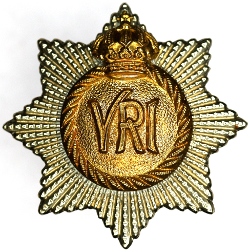 The Montreal Gazette, 15 September 1915
The Montreal Gazette, 15 September 1915








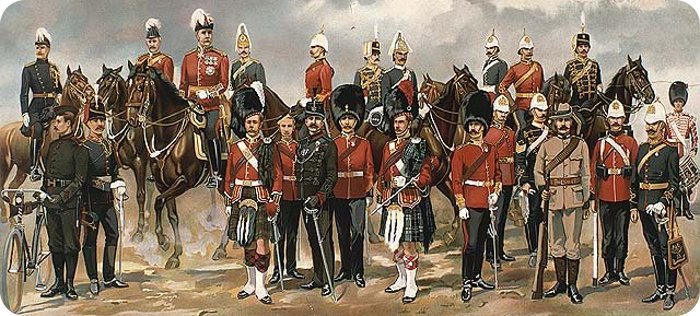


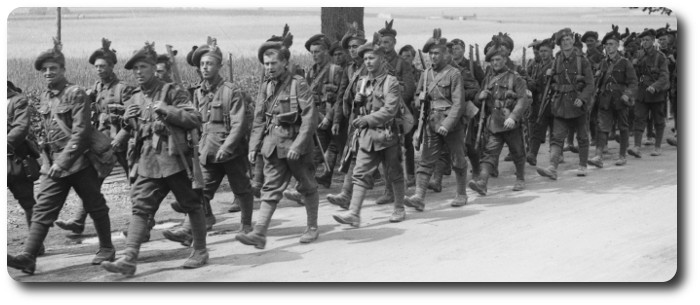

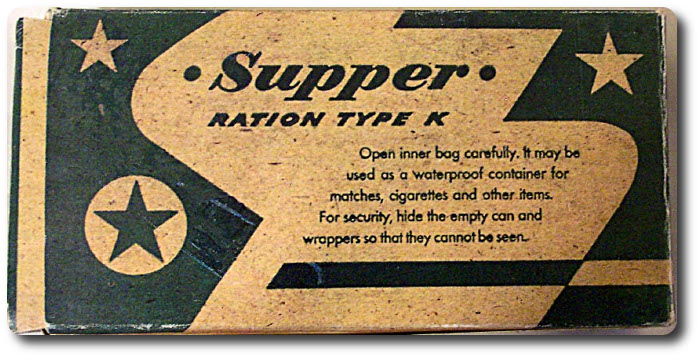

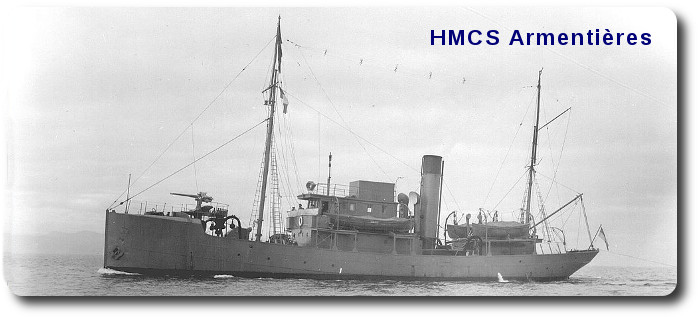
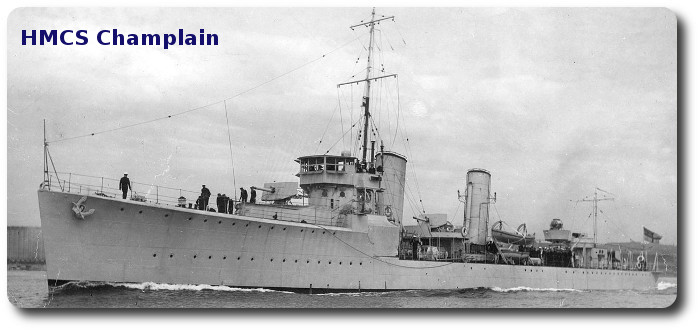


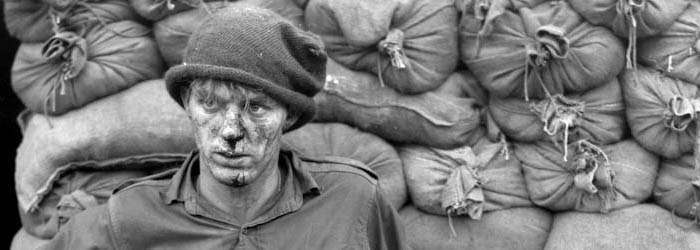



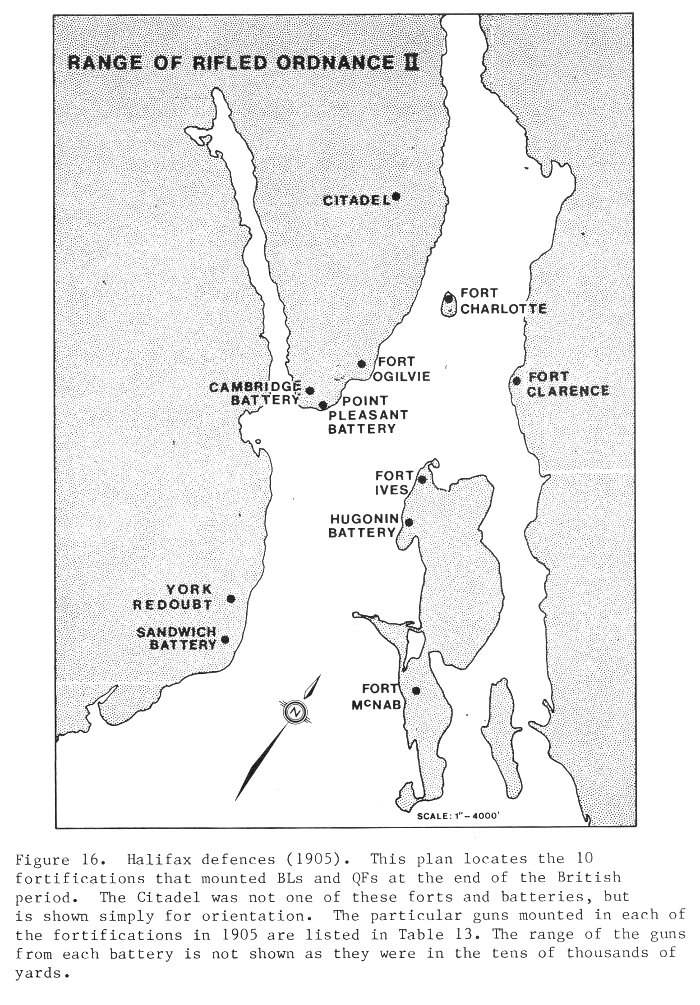
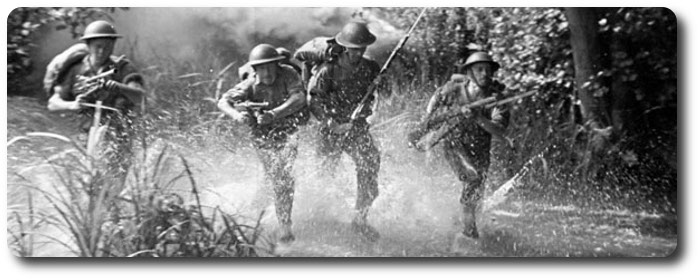
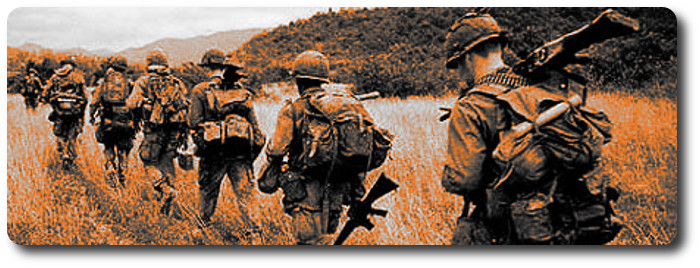
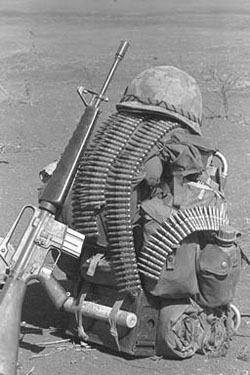 Washington—(UPI)—the Army is doing its best to reduce the pack of the foot-slogging soldier, but progress has been slow, the Defence Department reported today,.
Washington—(UPI)—the Army is doing its best to reduce the pack of the foot-slogging soldier, but progress has been slow, the Defence Department reported today,.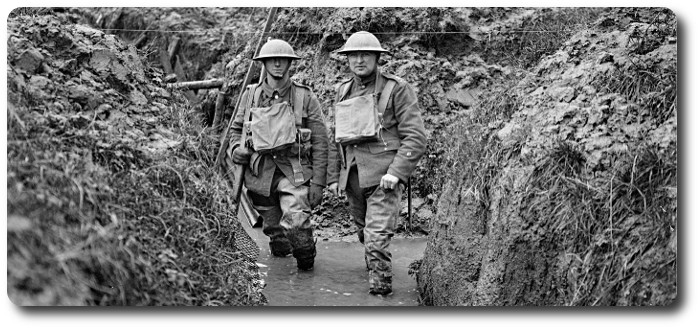

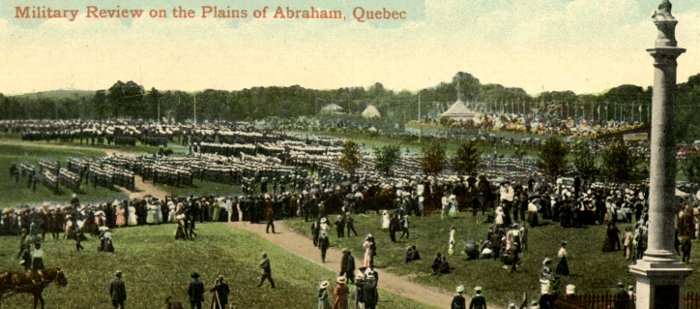
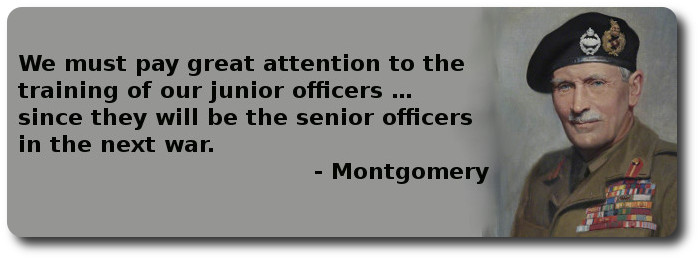
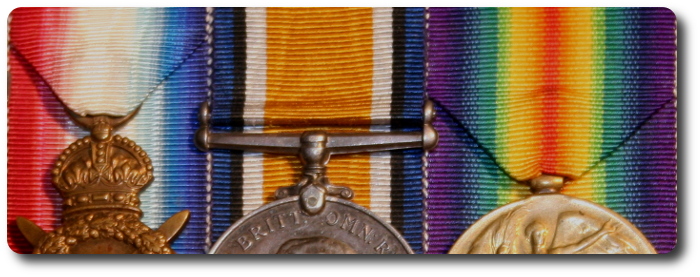
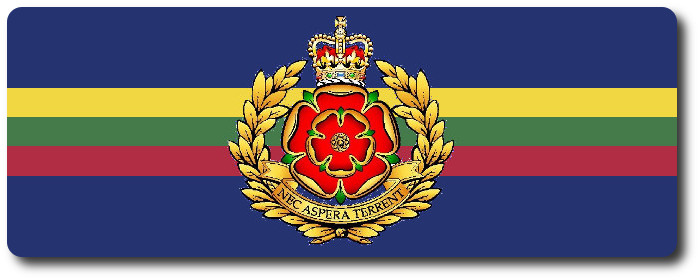
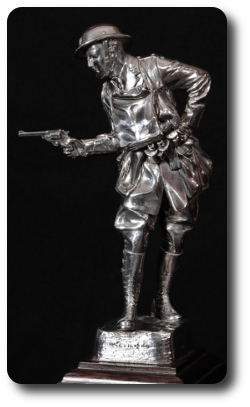 Sam Boast. In the late 1920s the officers of 2nd Battalion The South Lancashire Regiment subscribed towards a piece of silver which would serve as a memorial to those of their brother officers who had died in the Great War. The well-known sculptor Ried Dick was commissioned to make a silver statuette of a subaltern of the 82nd dressed in field service uniform. The honour of being the model fell to 2nd Lieutenant S.W. 'Sam' Boast MC because he seemed to symbolise the tradition of family service, the mutual trust and respect between officers and men, and the unifying and sustaining spirit of the Regiment. The Boasts had a tradition of service with the South Lancashires and at one time four of the family were serving together as Quartermaster, Platoon Commander, Drum Major and Drummer, while three Boast brothers won the Military Cross during the Great War. Sam, having been commissioned in the field, was decorated for gallantry in 1918. The sculpture was completed in 1930 and has had pride of place in the 1st Battalion Officers' Mess ever since. By tradition, Sam is never cleaned because the unpolished silver conveys the rugged feel of the mud of Flanders. His helmet, however, is shiny from the touch of generations of Regimental officers who, by leaning on Sam, can identify with the deeds of their forebears. At first sight, Sam looks rather stern and aggressive, but this is superficial. He represents, above all else, the good-humoured determination of the fighting men of Lancashire to succeed whatever the cost.
Sam Boast. In the late 1920s the officers of 2nd Battalion The South Lancashire Regiment subscribed towards a piece of silver which would serve as a memorial to those of their brother officers who had died in the Great War. The well-known sculptor Ried Dick was commissioned to make a silver statuette of a subaltern of the 82nd dressed in field service uniform. The honour of being the model fell to 2nd Lieutenant S.W. 'Sam' Boast MC because he seemed to symbolise the tradition of family service, the mutual trust and respect between officers and men, and the unifying and sustaining spirit of the Regiment. The Boasts had a tradition of service with the South Lancashires and at one time four of the family were serving together as Quartermaster, Platoon Commander, Drum Major and Drummer, while three Boast brothers won the Military Cross during the Great War. Sam, having been commissioned in the field, was decorated for gallantry in 1918. The sculpture was completed in 1930 and has had pride of place in the 1st Battalion Officers' Mess ever since. By tradition, Sam is never cleaned because the unpolished silver conveys the rugged feel of the mud of Flanders. His helmet, however, is shiny from the touch of generations of Regimental officers who, by leaning on Sam, can identify with the deeds of their forebears. At first sight, Sam looks rather stern and aggressive, but this is superficial. He represents, above all else, the good-humoured determination of the fighting men of Lancashire to succeed whatever the cost.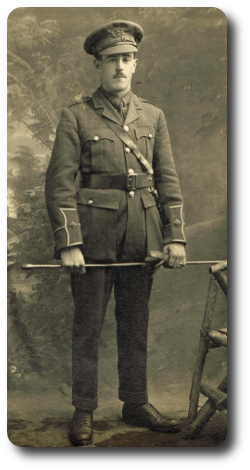 Sam Boast's Medals
Sam Boast's Medals